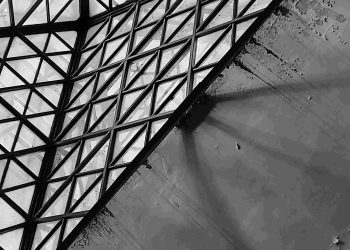Chic Chaos Design Styles

The Paradox of Disorder and Elegance
Can chaos be beautiful? This question might sound contradictory at first, but look closer at the rise of design styles that embrace imperfection, irregularity, and a touch of surreal beauty, and you’ll uncover an emerging movement: Chic Chaos. It’s not about abandoning structure entirely. Instead, it’s a deliberate, thoughtful creation of disarray—a kind of organized pandemonium that sparks curiosity and creativity.
Several years ago, I walked into a friend’s living room and was struck by the effortless integration of vintage furniture, modern art, and eclectic trinkets. It seemed chaotic at first, but the more I looked, the more every detail seemed purposeful. This paradox of disordered elegance fascinated me, and it planted a seed of curiosity. Could chaos, if controlled, be more liberating than conventional symmetry?
Breaking Free from Conventional Wisdom
Traditional design tends to prioritize uniformity, linearity, and predictability. But is such homogeneity a reflection of how we live and think? Life is messy, unpredictable, and often unscripted. Can our spaces, philosophies, and creative processes afford to be pristine?
Psychologist Mihaly Csikszentmihalyi, in his groundbreaking work on flow and creativity, identified that disorder often provides the fertile soil for innovation to emerge. Chaos, in its unfiltered form, can be overwhelming. But when curated intentionally, it fosters an environment ripe for surprising discoveries.
Think about the best brainstorming sessions. They thrive in an atmosphere where ideas collide unpredictably. Chic Chaos in design mirrors this concept, allowing materials, colors, and textures to clash before they find a harmonious balance. It challenges our conventional ideas of order by proving that predictability can sometimes suppress creativity.
The Crossroads of Design and Psychology
From a psychological standpoint, humans are wired to seek patterns. Chic Chaos forces us to confront partially resolved patterns, encouraging deeper engagement with our surroundings. It turns passive observation into active exploration. Every room or space that adopts this style becomes a conversation—between textures, shapes, and the observer.
Philosophically, this mode of design embodies a kind of existential rebellion. It rejects the idea that beauty must be polished or flawless, instead embracing the Japanese concept of
wabi-sabi
: the beauty in imperfection and impermanence. Similarly, it absorbs lessons from technology. Think of the burst-driven innovations of Silicon Valley, where failure isn’t stigmatized but celebrated as part of a larger creative process.
Future Trends: How Chaos Will Shape Design
As the world becomes increasingly digital and standardized, the yearning for something tangible, personalized, and imperfect grows. Just as AI-generated art challenges our ideas of human creativity, Chic Chaos defies cookie-cutter design models. In the next decade, we might see workplaces, homes, and even public spaces designed less for optimal efficiency and more for sparks of inspiration.
With remote work on the rise, individuals are looking to carve out workspaces within their homes that are adaptable without being sterile. Expect warm hardwoods juxtaposed with industrial metals, or vintage wallpaper meeting sleek, angular furniture. This dynamic mix reflects not just aesthetic preferences but a growing awareness of the need for mental flexibility and comfort in our environments.
How to Embrace Chic Chaos
-
Let Go of Perfection:
Start by embracing imperfections in your current space. A scratched coffee table or mismatched chairs can add character to a room. -
Play with Contrasts:
Combine materials like velvet and concrete or colors like gold and deep blue for striking visual tension. -
Display Personal Narratives:
Use objects that have personal meaning—travel souvenirs, family heirlooms, or DIY creations. -
Highlight Variety:
Mix eras and styles. A Victorian mirror can pair wonderfully with minimalist Scandinavian furniture. -
Edit Regularly:
The key to Chic Chaos is mindful curation. Keep refreshing your space to reflect your evolving emotions and inspirations.
Each of these steps is simple yet transformative. The goal isn’t to achieve controlled disorder for its own sake but to reflect an intimate, evolving connection between yourself and your surroundings.
Continuing the Journey: Learning through Adaptation
In adopting Chic Chaos, you’ll discover that design extends beyond aesthetics. It becomes an ongoing dialogue about your values, priorities, and the way you choose to inhabit the world. Adapting this philosophy fosters self-awareness, highlights the importance of experimentation, and promotes lifelong learning.
Remember, the heart of Chic Chaos isn’t in creating a brand or following a prescriptive aesthetic—it’s about honoring the complexities of life through design. Much like the harmony within symphonies of discordant notes, a space with deliberate chaos reveals layers of depth, resilience, and creativity. Let the interplay of beauty and chaos lead you not only to better spaces but to richer, more unpredictable experiences.










